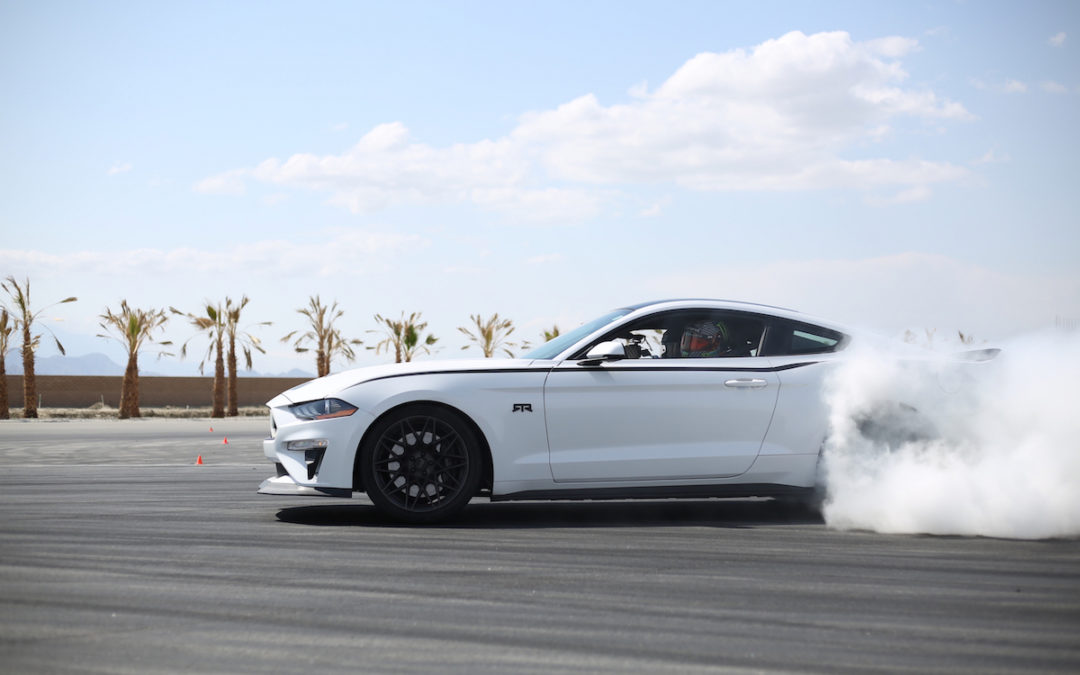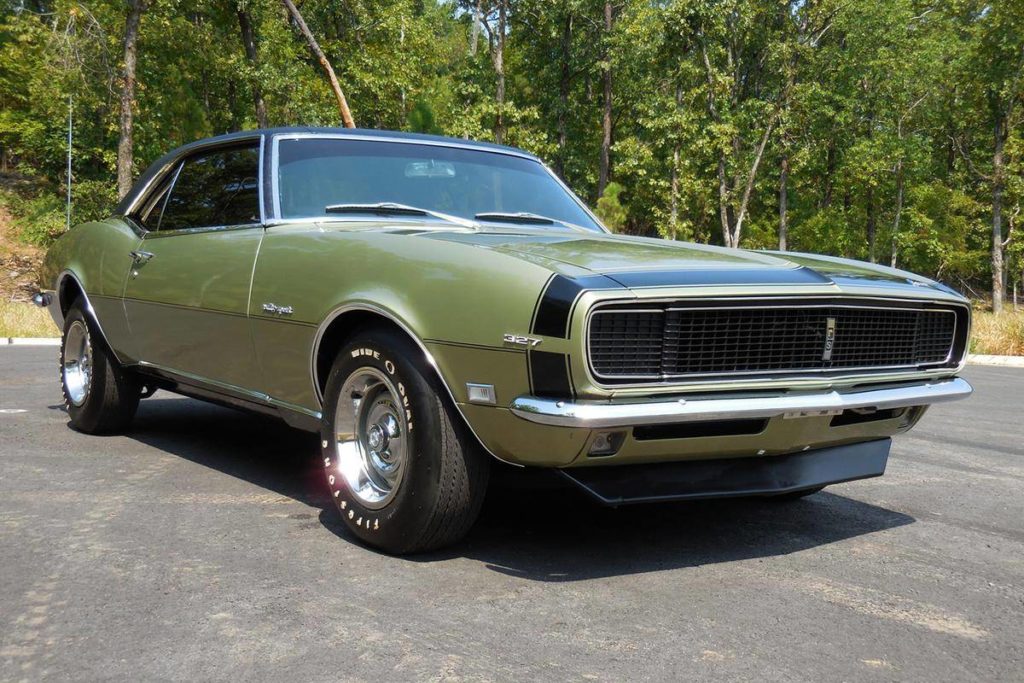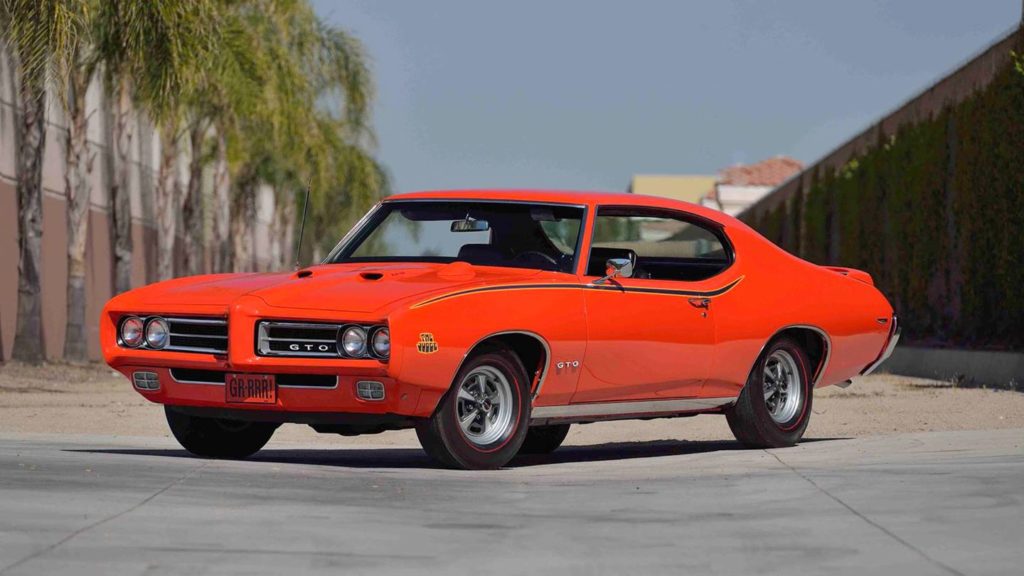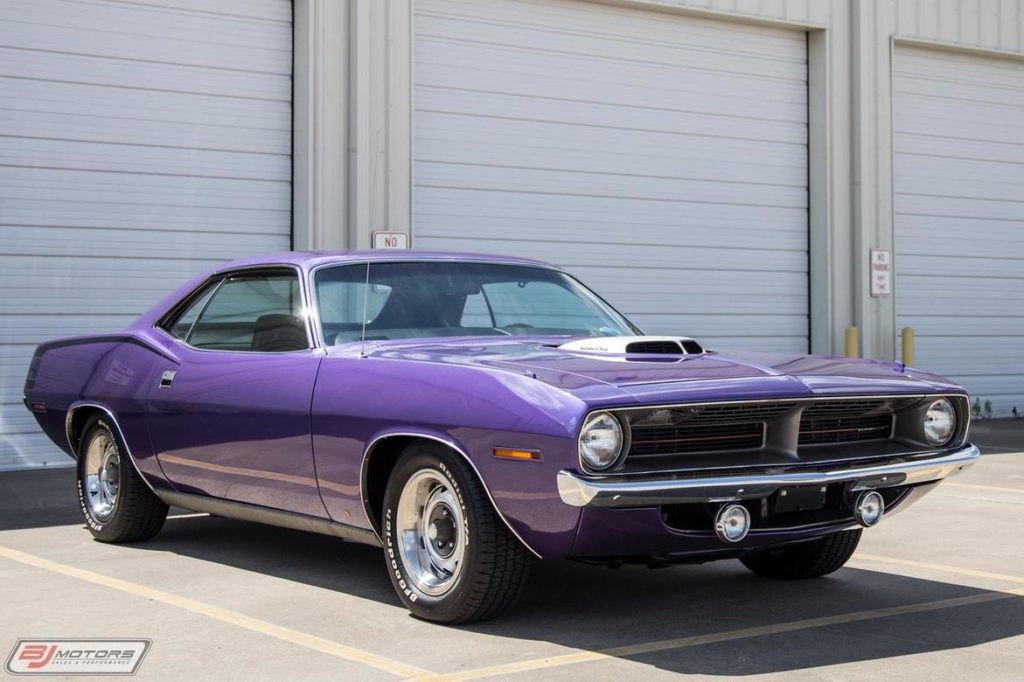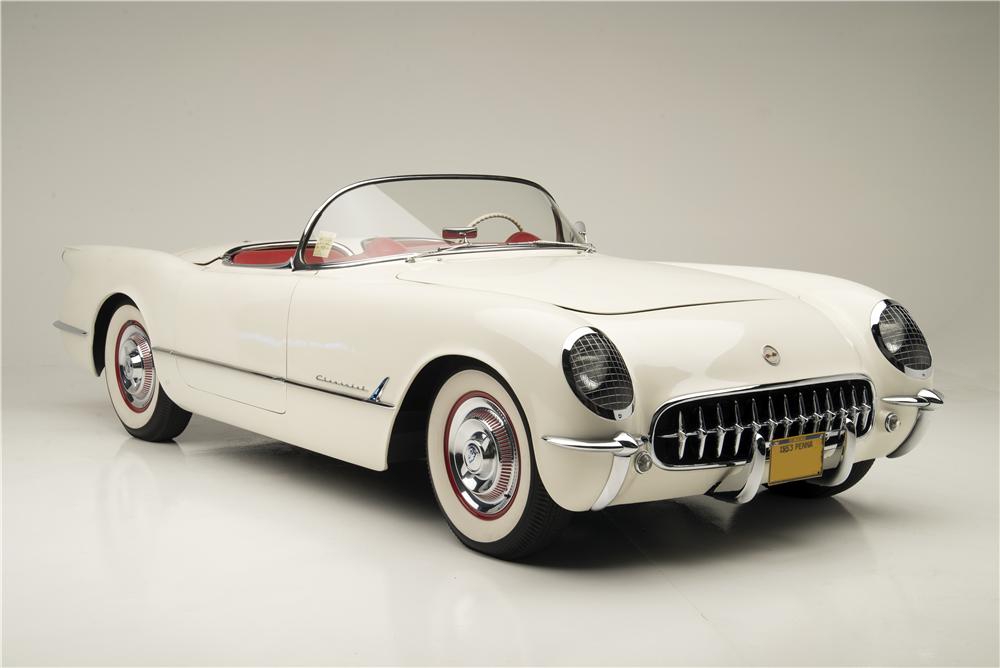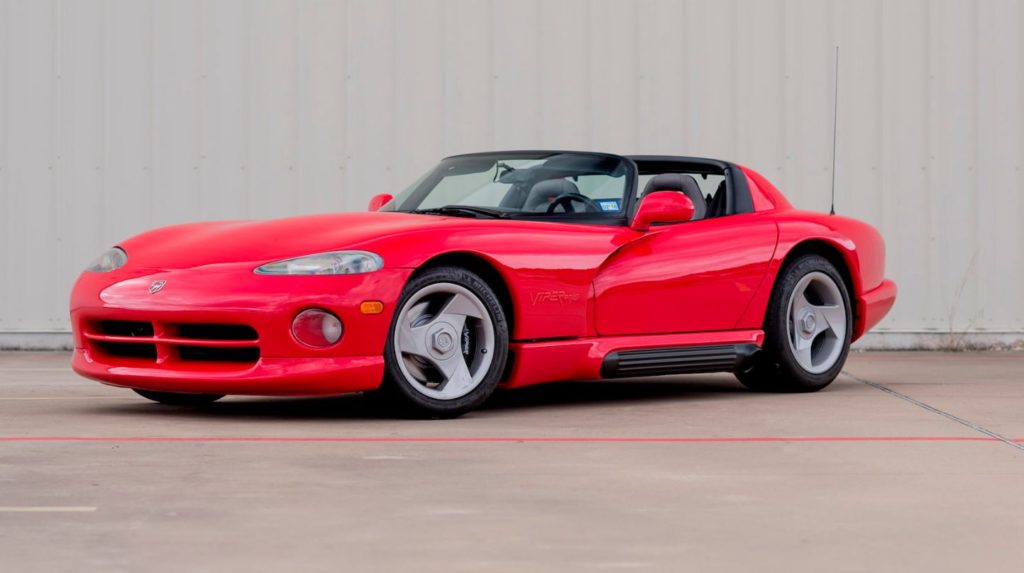America doesn’t do subtle. Our food is big, our music is loud, our politics are theatric, and our cars are brash. It makes sense why muscle cars caught on in the mid-20th century, and why Americans still gravitate towards these tire-thrashing heroes. These front-engine, rear-drive, high displacement autos fulfill our desire to harness power and make a show of it.
Over the past several decades, numerous muscle car nameplates have come and gone, but these five brutes will never be forgotten.
Ford Mustang
Ford had no idea the waves it would create and the legacy it would build when it introduced the Mustang in 1964. After a positive reception to its Mustang Concept in 1963, Ford decided to build the compact sport coupe aimed at young professionals.
The Mustang established the pony car segment of muscle cars with its long hood and short deck. Over the course of the first generation’s life cycle, power rose considerably. Though it originally developed just 101hp from the six-cylinder and 164hp from the V8, the gen-one Mustang eventually received 302 cu in V8s (dubbed Boss 302s) and made a hearty 290hp and 290 lb-ft of torque. A redesign in 1969 lengthened the Mustang and added more weight.
In 1973, Ford introduced the second generation Mustang, which was based on the Ford Pinto. The smaller, more fuel efficient Mustang II was able to endure the oil crisis and compete against Japanese compacts, but enthusiasts largely panned the car. In 1979, the third gen (Fox Body) ‘Stang debuted with sharper lines and three body styles. The fourth and fifth generations were by far the biggest design leaps for the Mustang and became love it or loathe it looks.
The current, sixth generation Mustang, includes track-honed variants like the GT350R, fuel-efficient four-cylinder models, and an upcoming 700+ horsepower Shelby GT500 derivative. In short, there’s never been a better time to be a Mustang enthusiast.
Chevy Camaro
Chevrolet couldn’t turn a blind eye to Ford’s success with its new Mustang, and the American automaker eventually conceived a pony car of its own. In 1966, Chevy unveiled the Camaro (a name which doesn’t mean anything, but some execs at GM thought it was a French slang word for “friend”), which was based on a new F-body platform.
The first generation Camaro was offered with no fewer than three 6-cylinder engines and four V8s (including a huge 6.5-liter). The hottest first-gen became the Z/28, with its 302 cu in V8 making 290hp. The longer, wider second generation Camaro arrived in 1970 and was produced through 1981. A lower, more angular third generation debuted in 1982 with fuel injection and an available turbo-hydramatic four-speed automatic transmission. Camaro enthusiasts would probably like to pretend the round, undistinguished fourth gen car never existed.
In 2010, Chevrolet took design inspiration for its fifth generation Camaro from the much loved first gen. Riding on a new platform and utilizing potent LS V8 engines, this one dealt a blow to Ford’s Mustang. The current, sixth generation Camaro was recently redesigned and is available with as much as 650hp in ZL1 guise. While most folks don’t love the new bodywork, it’s hard to argue with the car’s supercar-rivaling performance.
Dodge Challenger
Though Chrysler already had the Plymouth Barracuda to fight Ford’s Mustang, the company decided there was room slightly upmarket to insert a new muscle car. Though it shared a platform with the Barracuda, the Dodge Challenger had a longer wheelbase, more spacious and luxurious cabin, and more trim options when it debuted in 1970. While not a land yacht like the Dodge Charger, the Challenger was certainly imposing.
Engine options included a range of straight-six and V8s, including a 425-hp 7.0-liter Hemi V8 in the R/T trim. Several other Challenger variants were added in the years that followed, including the Rallye and Trans Am (T/A) homologation car. Alas, the oil crisis crippled muscle car sales and sent the Challenger into early retirement in 1974.
For a brief period in the late ‘70s and early ‘80s, Dodge revived the Challenger name for a re-badged Mitsubishi Galant. This proved a mistake, as enthusiasts never appreciated a subcompact Challenger. It wasn’t until 2008 that the Challenger made a proper return as a big, burly two-door riding on a rear-drive platform. The third generation Challenger has soldiered on since that time, with several technology and convenience tweaks, and a few stylistic updates.
The current Challenger is by far the most retro-designed muscle car available, favoring straight-line speed (and effortless burnouts) over track performance. The current top dog Challenger is the Hellcat Redeye and its totally bonkers 797-horsepower supercharged V8.
Pontiac GTO
In 1964, GM transformed the Pontiac Tempest from a compact two-door to a mid-size coupe that shared its A Body platform with the Chevy Chevelle. Other changes included the switch from four-cylinder power to a straight-six with 140 horsepower. Those wanting more grunt could upgrade to a 326 cubic-inch V8 making either 240 or 280hp. Wanting to discontinue the Tempest Le Mans name (which had previously denoted V8-powered versions), Pontiac “borrowed” a title from Ferrari: GTO.
The Pontiac GTO (Gran Turismo Omologato) was an instant hit and spurred rivals like Ford, Chevy, and Chrysler to fast-track affordable, high-output vehicles of their own. GM continued to develop the GTO’s style and performance throughout the 60s, but retired the badge in 1974 as sales waned. In 2004, Pontiac re-launched the GTO as a standalone model (it was really a re-badged Holden Monaro) and while the car’s 5.7-liter LS1 V8 (and later 6-liter V8) provided ample excitement, the design didn’t meet expectations. 2006 was the last year for the GTO and a foreshadowing of Pontiac’s own demise.
Plymouth Barracuda
The same year that Pontiac introduced its GTO-badged Tempest, Chrysler took the wraps off its fastback compact, the Plymouth Barracuda. Initially, the ‘Cuda was nothing special: the chassis was shared with the four-door Valiant, styling was ho-hum, and engine options included two slant-sixes and a 273 cubic-inch V8 making 180hp. In 1967, Plymouth responded to the Mustang’s success with a longer, more aggressive second-gen Barracuda. This new model was available with big block V8 motors to go with handling improvements.
The third generation ‘Cuda bowed in 1970 as a totally different animal. No longer sharing a platform with a family sedan, the low, long fastback was ready for war. Now on offer with three V8 engines — the most potent of which was the 426 cu in Hemi (rated at 424hp) — the Cuda was on its way to legendary status. As with most muscle cars, however, the 1970s energy crisis severely impacted sales and Plymouth eventually retired the Barracuda.
We haven’t seen the last of the ‘Cuda, however, as FCA is rumored to bring the nameplate back as a successor to the Dodge Challenger next year.
Early and Late Bloomers
Chevy Corvette
Before there was the muscle car segment, there was the Chevrolet Corvette. Introduced in 1953 as a rear-drive, two-door convertible, the Corvette was more stylish cruiser than hot rod. As the first generation developed, however, an emphasis on performance saw the Corvette become the first mass production car to deliver 1 horsepower per cubic inch.
In 1963, the C2 Corvette introduced the Sting Ray name and a coupe body style. Highlights of this generation included four-wheel disc brakes, a big block 6.5-liter V8, and optional side exhaust pipes. Before the third generation Corvette debuted in 1968, Chevy offered its L88 V8 for the C2, which was rated at 430hp. The C3 Corvette debuted T-top roof panels and a roster of important nameplates like LT-1, ZR-1, and Z07. New power measurements and adaptation of low-lead fuel sources reduced power ratings for the C3.
In 1984, Chevrolet introduced the controversially styled C4 with new interior technology and a straight-edged exterior. The larger, rounder C5 offered industry-leading drag coefficients, near 50-50 weight distribution, stability control, and reduced weight. Though some view the C5 as the ugliest of Corvette generations, it was a big leap in performance. The highlight of the C6 generation Corvette (produced from 2005-2013) was the Z06 model. With handling and acceleration that rivaled sports cars costing three times as much, the Z06 previewed the track-taming dynamics of today’s muscle cars.
The current seventh generation Corvette is an angular beast with up to 755 hp on tap and a manual transmission still on offer.
Dodge Viper
The youngest nameplate of this list (and arguably the craziest), the Dodge Viper didn’t hit the scene until 1991. Idealized as a modern day Cobra, the Viper used a Lamborghini-developed V10 engine, rear-drive platform, and nothing in the way of traction or stability control. Designed with little in the way of luxury, early Vipers lacked air conditioning, ABS, exterior door handles, glass windows, and airbags. Some view these first generation cars as death traps – others see them as purist sports cars.
In 1996, Dodge introduced the second generation Viper and the first coupe bodystyle (the GTS). Using the same 8.0-liter V10, the GTS now made 450hp and 490 lb-ft of torque. Amenities improved substantially, with A/C, power windows, power door locks, and airbags now standard. In 2003, the third generation Viper (SRT-10) took on a more chiseled look and bumped output to 500hp. A fourth generation in 2008 changed little of the car’s appearance but increased power substantially – to 600 horses.
The final Viper generation (at least for now) bowed in 2013. Thoroughly more modern and accommodating than its predecessors, the new SRT Viper cranked out 640hp from an 8.4-liter V10. Stability control was added to keep the vehicle manageable, but nothing could be done about sliding sales. Ultimately, Dodge ended production of the Viper in 2017. The most ludicrous version of the now-dead Viper was the ACR model, which featured a stripped down cabin and massive bits of fixed aerodynamics.

